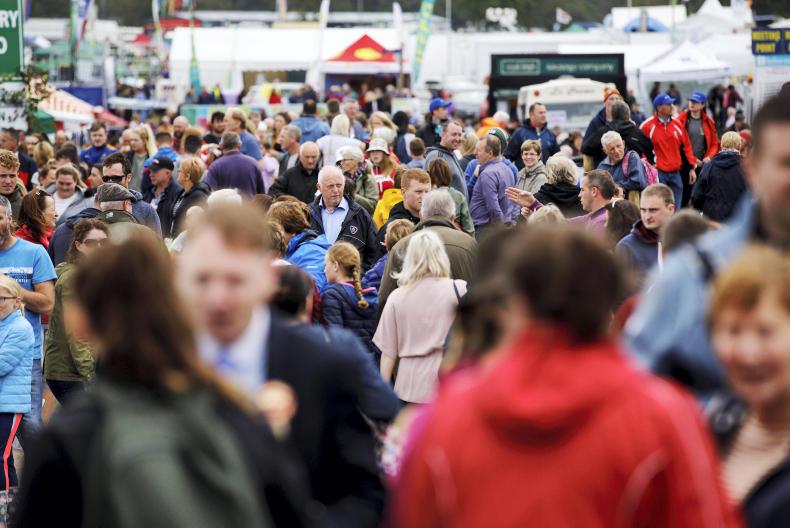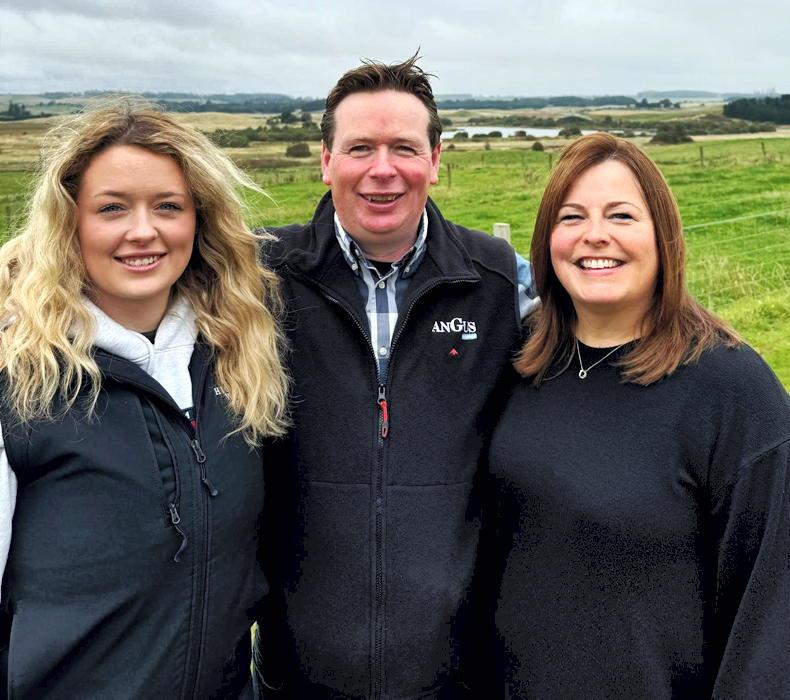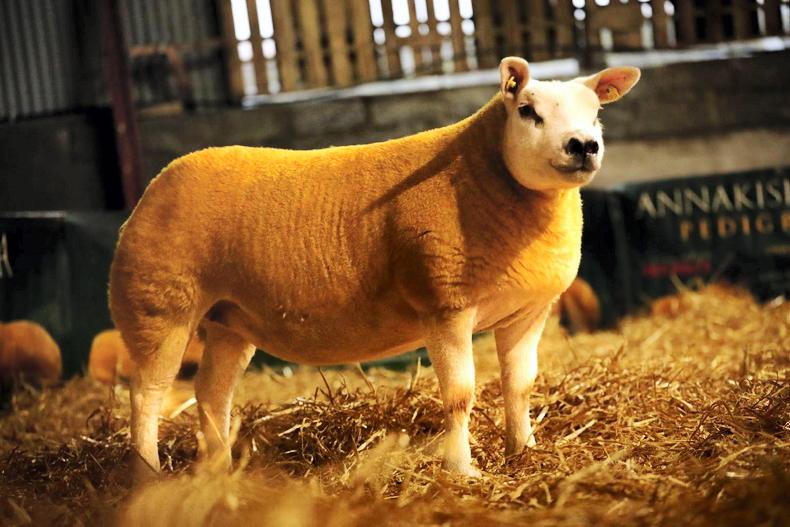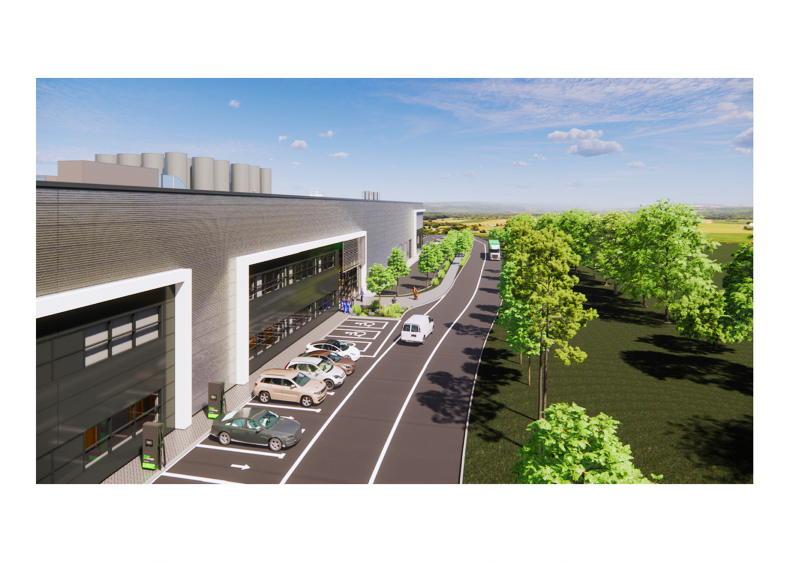Usually, social media would be decorated today with images of all the goings on from the Tullamore National Livestock Show. This year is a different story however, with all summer agricultural shows called off due to COVID-19.
While only a date in the calendar for some, it’s the biggest day of the year for others. Over 60,000 people descend on the Butterfield estate each year, generating in the region of €4m for the local economy. Tullamore Show may be the biggest show, but by no means is the only one. It’s estimated that over 640,000 people attend summer shows throughout the year, generating over €80m for the rural economy in Ireland - and that’s excluding the Ploughing, which is said to add a further €35m alone.
When you look at these figures, it proves just how much rural Ireland relies on the likes of country shows.
The shows provide a superb public forum to experience what rural life and communities have to offer
Agricultural shows date back over 200 years and were originally established to promote best practice in breeding, livestock and crop production. While not to the same extent, today's shows are very much in line with what was trying to be achieved back then.
The shows provide a superb public forum to experience what rural life and communities have to offer, in terms of showing and show jumping horses, together with cattle, sheep and a variety of other animals representing the epitome of excellence.

A general view of procceedings at Tullamore Show. / Donal O' Leary
In fact, it is now even more important to get this message across. Twenty years ago, no child was more than one generation removed from the land. With increased urbanisation, this is no longer the case and children today are often unaware of where their food comes from. I once heard the line that kids from urban areas have seen more zoo animals than farm animals. Unless children understand how the food gets on their plate, they won’t appreciate the value of it.
To make this happen, you need relentless volunteers to keep the shows on the road. Most of these are community volunteers, who take on the challenge of running an agricultural show purely for the good of their community. Looking at the Tullamore Show, we see a massive 600 volunteers are required to keep things moving, with the majority in some way involved in the national livestock show.
National Livestock show
Competitive displays of animals continue to be a top draw for visitors attending shows. This is an important role in the overall industry and in promoting pedigree stock to the public. Having prime show animals with the excellent husbandry skills of exhibitors on display inspires confidence in the consumer. This year was supposed to be the 29th National Livestock Show, and many were hoping for the returning prize fund of €175,000 to be spread out among the show exhibitors throughout Ireland.
It’s estimated that over 640,000 people attend summer shows throughout the year, generating over €80m for the rural economy in Ireland
However, prize money is the least of most exhibitor’s worries, as the shop window shows carry is worth a lot more. Breeders and exhibitors have been deprived of the opportunity to show and promote their stock. Securing a red rosette at the National Livestock Show has the opportunity to add substantial value to that animal, or indeed, the family line it is from. Having been at over 25 shows a year for the past four summers, I know exactly how much added value can be achieved. I’ve seen young bulls and heifers sold for sums that were initially “not for sale”. Those that didn’t sell privately and were offered for sale in the autumn, following a summer of showing, were already marked in many catalogues weeks before the sale was set to take place.
Many of these purchases have been from overseas buyers, which highlights the networking opportunities that can be made. Last year, Tullamore Show was the host for a day of the World Charolais technical congress, with delegates from all over the world attending. The overall champion that day was Sagesse Pierre, later purchased by Bova AI due to the demand of enquiring overseas breeders.
Everyone will speak of the great one they bred in 2020, but very few will remember the names
We cannot underestimate the value that shows carry for the rural economy and the continuation of rural Ireland, but also the value they offer to cattle and sheep breeders to promote the quality stock we produce year in and year out.
Unfortunately, everyone will speak of the great one they bred in 2020, but very few will remember the names.
All we can do is look forward and hope that come May 2021, all will be back to normal. While breeders may not have the stock born to show yet, Freda at Tullamore tells me that work is well underway to make the show on Sunday 8 August 2021 the best one yet!
Usually, social media would be decorated today with images of all the goings on from the Tullamore National Livestock Show. This year is a different story however, with all summer agricultural shows called off due to COVID-19.
While only a date in the calendar for some, it’s the biggest day of the year for others. Over 60,000 people descend on the Butterfield estate each year, generating in the region of €4m for the local economy. Tullamore Show may be the biggest show, but by no means is the only one. It’s estimated that over 640,000 people attend summer shows throughout the year, generating over €80m for the rural economy in Ireland - and that’s excluding the Ploughing, which is said to add a further €35m alone.
When you look at these figures, it proves just how much rural Ireland relies on the likes of country shows.
The shows provide a superb public forum to experience what rural life and communities have to offer
Agricultural shows date back over 200 years and were originally established to promote best practice in breeding, livestock and crop production. While not to the same extent, today's shows are very much in line with what was trying to be achieved back then.
The shows provide a superb public forum to experience what rural life and communities have to offer, in terms of showing and show jumping horses, together with cattle, sheep and a variety of other animals representing the epitome of excellence.

A general view of procceedings at Tullamore Show. / Donal O' Leary
In fact, it is now even more important to get this message across. Twenty years ago, no child was more than one generation removed from the land. With increased urbanisation, this is no longer the case and children today are often unaware of where their food comes from. I once heard the line that kids from urban areas have seen more zoo animals than farm animals. Unless children understand how the food gets on their plate, they won’t appreciate the value of it.
To make this happen, you need relentless volunteers to keep the shows on the road. Most of these are community volunteers, who take on the challenge of running an agricultural show purely for the good of their community. Looking at the Tullamore Show, we see a massive 600 volunteers are required to keep things moving, with the majority in some way involved in the national livestock show.
National Livestock show
Competitive displays of animals continue to be a top draw for visitors attending shows. This is an important role in the overall industry and in promoting pedigree stock to the public. Having prime show animals with the excellent husbandry skills of exhibitors on display inspires confidence in the consumer. This year was supposed to be the 29th National Livestock Show, and many were hoping for the returning prize fund of €175,000 to be spread out among the show exhibitors throughout Ireland.
It’s estimated that over 640,000 people attend summer shows throughout the year, generating over €80m for the rural economy in Ireland
However, prize money is the least of most exhibitor’s worries, as the shop window shows carry is worth a lot more. Breeders and exhibitors have been deprived of the opportunity to show and promote their stock. Securing a red rosette at the National Livestock Show has the opportunity to add substantial value to that animal, or indeed, the family line it is from. Having been at over 25 shows a year for the past four summers, I know exactly how much added value can be achieved. I’ve seen young bulls and heifers sold for sums that were initially “not for sale”. Those that didn’t sell privately and were offered for sale in the autumn, following a summer of showing, were already marked in many catalogues weeks before the sale was set to take place.
Many of these purchases have been from overseas buyers, which highlights the networking opportunities that can be made. Last year, Tullamore Show was the host for a day of the World Charolais technical congress, with delegates from all over the world attending. The overall champion that day was Sagesse Pierre, later purchased by Bova AI due to the demand of enquiring overseas breeders.
Everyone will speak of the great one they bred in 2020, but very few will remember the names
We cannot underestimate the value that shows carry for the rural economy and the continuation of rural Ireland, but also the value they offer to cattle and sheep breeders to promote the quality stock we produce year in and year out.
Unfortunately, everyone will speak of the great one they bred in 2020, but very few will remember the names.
All we can do is look forward and hope that come May 2021, all will be back to normal. While breeders may not have the stock born to show yet, Freda at Tullamore tells me that work is well underway to make the show on Sunday 8 August 2021 the best one yet!










SHARING OPTIONS